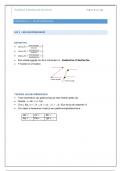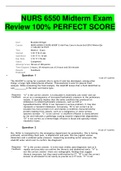Essay
AQA A Level Media Studies - Online Media (25 marker)
- Course
- Institution
Struggling to structure your 25 mark essays? As an A* Media Student, I had always included key knowledge of the case study as well as structured my paragraphs in the way the examiners like it! This is based on 'The Voice' and 'Teen Vogue'.
[Show more]













